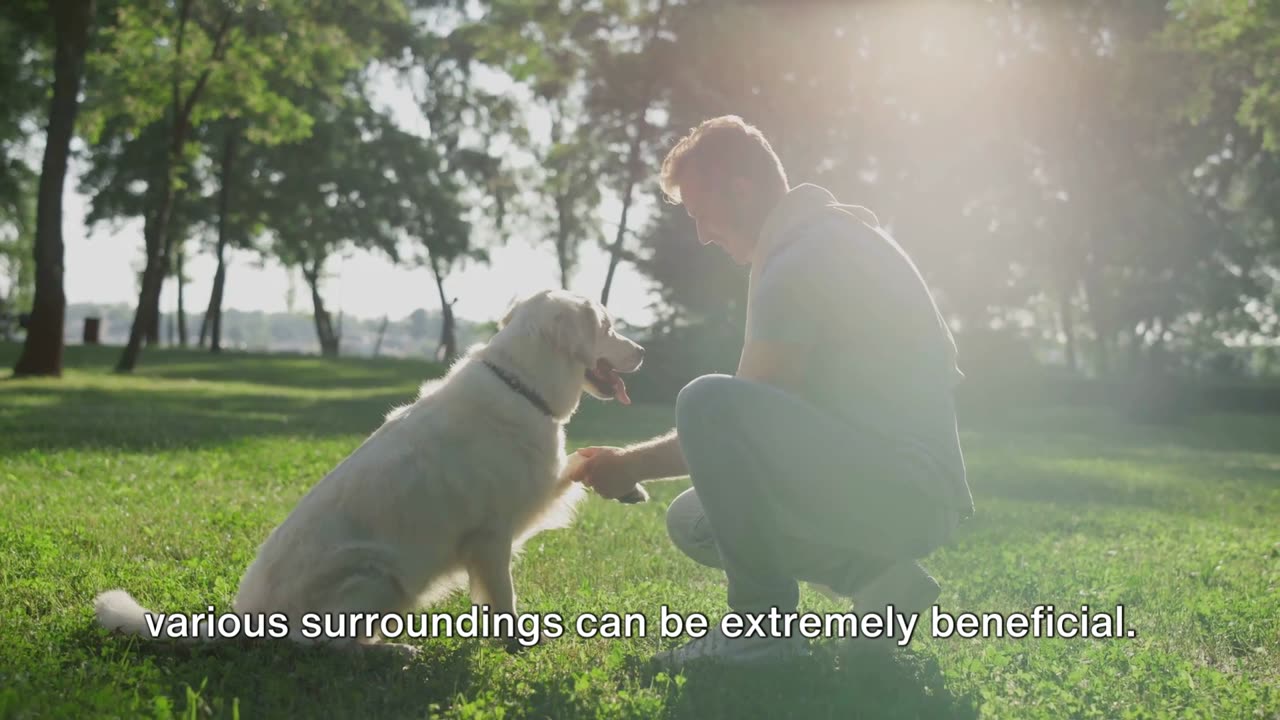Premium Only Content

Proven Techniques for Obedient dog Companions
Fundamentals of dog training techniques:
1. **Positive Reinforcement**:
- Positive reinforcement is a training technique that rewards desired behaviors with treats, praise, or toys.
- It strengthens the bond between the dog and the owner by creating a positive association with good behavior.
- This technique encourages dogs to repeat behaviors that earn rewards, making it effective for teaching commands and shaping desired behaviors.
- Positive reinforcement is based on the principles of operant conditioning, focusing on rewarding behaviors rather than punishing unwanted behaviors.
- It can be used to train dogs of all ages and breeds and is particularly effective for building confidence in shy or fearful dogs.
2. **Clicker Training**:
- Clicker training is a form of positive reinforcement that uses a small device called a clicker to mark desired behaviors.
- The clicker emits a distinct sound, signaling to the dog that they have performed the correct behavior and will receive a reward.
- Clicker training allows for precise timing, making it effective for shaping complex behaviors and capturing split-second actions.
- It helps dogs understand exactly which behavior is being rewarded, leading to faster learning and clearer communication between the dog and the trainer.
- Clicker training is widely used in obedience training, agility, and other dog sports due to its versatility and effectiveness.
3. **Marker Training**:
- Marker training is similar to clicker training but uses verbal markers such as "yes" or "good" instead of a clicker.
- Verbal markers serve the same purpose as a clicker, signaling to the dog that they have performed the correct behavior and will receive a reward.
- Marker training allows trainers to communicate with their dogs from a distance and in various environments where using a clicker may not be practical.
- It can be combined with other training techniques, such as luring and shaping, to teach complex behaviors and improve obedience.
4. **Lure and Reward**:
- Lure and reward training involves using a treat or toy to guide the dog into performing a desired behavior.
- The trainer uses the lure to attract the dog's attention and guide them into the desired position or action, such as sitting or lying down.
- Once the dog performs the desired behavior, they are rewarded with the treat or toy, reinforcing the behavior.
- Lure and reward training is effective for teaching basic obedience commands and shaping behaviors in young or inexperienced dogs.
- It should be accompanied by fading the lure gradually, so the dog learns to respond to verbal cues rather than relying on the presence of a lure.
5. **Capturing Behavior**:
- Capturing behavior involves rewarding the dog for spontaneously performing a desired behavior without any prompting from the trainer.
- The trainer observes the dog closely and rewards them immediately when they exhibit the desired behavior, such as sitting or shaking paws.
- Capturing behavior relies on timing and patience, as the trainer must be ready to reward the behavior as soon as it occurs.
- This technique is particularly effective for shaping behaviors that occur naturally and can be difficult to train using other methods.
6. **Shaping**:
- Shaping is a training technique that involves gradually molding a desired behavior by rewarding successive approximations of that behavior.
- The trainer breaks down the desired behavior into small, achievable steps and rewards the dog for each step towards the final behavior.
- Shaping requires patience and consistency, as the trainer must be able to recognize and reward small improvements in the dog's behavior.
- It is an effective technique for teaching complex behaviors, such as agility obstacles or tricks, by building upon the dog's existing skills and abilities.
7. **Desensitization and Counterconditioning**:
- Desensitization and counterconditioning are techniques used to modify a dog's emotional response to a particular stimulus, such as loud noises or strangers.
- Desensitization involves gradually exposing the dog to the stimulus at a low intensity, allowing them to become accustomed to it over time.
- Counterconditioning involves pairing the presence of the stimulus with something the dog enjoys, such as treats or play, to create a positive association.
- These techniques are often used to help dogs overcome fears, anxieties, and phobias by replacing negative emotions with positive ones.
-
 6:30:44
6:30:44
SpartakusLIVE
14 hours agoI’M BACK || ONLY Solos on WZ - NO BLOPS7, NO REDSEC, NO ARC, NO FRIENDS
140K2 -
 2:03:42
2:03:42
The Connect: With Johnny Mitchell
16 hours ago $11.00 earnedAmerican Vigilante Reveals How He Went To WAR Against The WORST Cartels In Mexico
23.6K2 -
 2:40:59
2:40:59
BlackDiamondGunsandGear
9 hours agoITS MA'AM!! / After Hours Armory / Are you threatening me?
31.7K6 -
 44:54
44:54
SouthernbelleReacts
8 days ago $2.02 earnedHIS RUG… I CAN’T STOP LAUGHING 🤣 | Big Lebowski Reaction
21.4K8 -
 2:17:46
2:17:46
megimu32
8 hours agoOFF THE SUBJECT: Reddit Meltdowns, Music Takes & Bodycam Breakdowns
54.5K12 -
 5:49:10
5:49:10
The Rabble Wrangler
14 hours agoRedSec with Mrs. Movies | The Best in the West Carries His Wife to Victory!
36.4K1 -
 2:40:59
2:40:59
DLDAfterDark
7 hours ago $13.27 earnedTrans Man's Death Threats To Christian Conservatives - Whistlin' Diesel Tax Evasion
36.9K3 -
 23:42
23:42
Robbi On The Record
2 days ago $7.28 earnedWhat's happening in the republican party?? BTS of Michael Carbonara for Congress
71.4K12 -
 4:53
4:53
PistonPop-TV
2 days ago $3.07 earnedThe G13B: The Tiny Suzuki Engine That Revved Like Crazy
18.5K1 -
 5:55:29
5:55:29
GritsGG
9 hours ago#1 Most Warzone Wins 4000+!
30.1K2